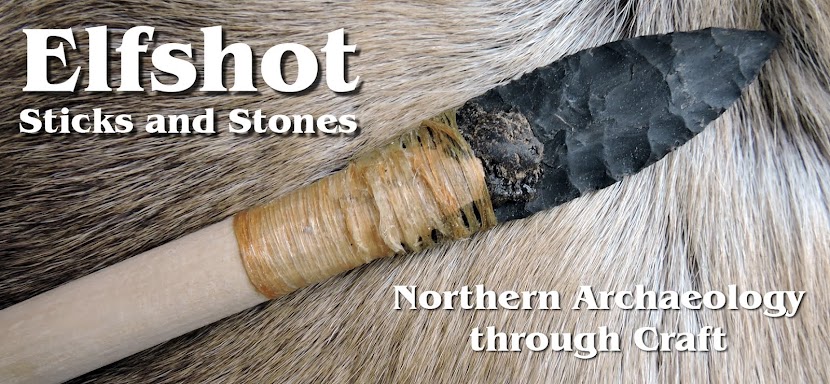 |
| Dorset Palaeoeskimo scoop or ladle, found by Jown Erwin at Fleur de Lys, NL. On display in The Rooms, St.John's. |
 |
| This artifact was made entirely by hand, using stone tools about 1600 years ago |
 |
| Look how thin and evenly shaped the walls are! |
The scoop was preserved in a waterlogged part of the Fleur de Lys soapstone quarry and it took months of conservation to stabilize the wood so that it could be safely displayed in a dry air environment. The conservation process was documented by the Canadian Conservation Institute in their
Before and After Gallery. You can read about the Soapstone quarrying process, and how the scoop may have fit into that operation in John Erwin's chapter called
Revisiting the Dorset Soapstone Quarry in Fleur De Lys, Newfoundland in
Contributions to the Study of the Dorset-Palaeo Eskimos.
Edit: I'm not sure of the exact dimensions of the scoop - but it would be just about the right size to serve a banana split in.
Photo Credits: Tim Rast




My crew chief Brent Murphy was responsible for finding and carefully excavating the ladle. It was unearthed in 1998 at approximately 1.5 meters below the present day ground surface. It is carved from a single piece of spruce by Dorset Palaeoeskimos approximately AD 430.
ReplyDeleteAlthough organic artifacts such as this are generally not preserved in the acidic soils of Newfoundland, this specimen remained intact for over 1600 years due to a cold wet anaerobic burial environment. Since there are few preserved organic Palaeoeskimo remains in Newfoundland, this specimen provides a rare glimpse of Dorset woodworking skills. The ladle measures 18.5cm long, 3.0cm wide, 0.5cm thick and weighs 65.3 grams - and was beautifully conserved by CCI staff.
As for its function, I think it actually served as a drinking ladle, and it's deposition at the base of the quarry was like a bucket at the bottom of a well.
ReplyDeleteIt is a delicate piece with wear in the vicinity of the "spout" which would be in keeping with such a function. We also have good evidence that the natural spring - which flooded our excavation - was present at the time the Dorset were excavating the soil in front of the quarry face to access unweathered soapstone.
Incidentally the partial remains of the second ladle are almost identical in size and shape to the complete specimen.
Thanks for all the info, John - its a remarkable artifact. That bit of wood has had a fascinating journey from tree to museum.
ReplyDelete